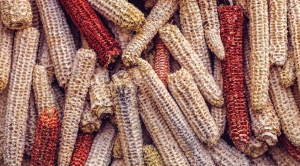Before toilet paper became widely available, people in America and other parts of the world used a variety of materials for personal hygiene after using the bathroom. One of these materials was the corn cob.
Corn cobs were readily available on farms and were often used as a cheap and easily accessible alternative to toilet paper. The cobs were dried out and then used to clean oneself after using the bathroom.
The use of corn cobs for hygiene purposes dates back to the 19th century, but it is unclear exactly when it began. However, it was a common practice among rural Americans, especially those living in poverty, as they did not have access to more expensive alternatives such as toilet paper or bidets.
However, the use of corn cobs was not without its drawbacks. The cobs were rough and could be abrasive on the skin, and they also often left bits of corn silk or kernels on the skin. Additionally, they were not as absorbent as toilet paper, so multiple cobs were often needed to fully clean oneself.
Despite these drawbacks, many people continued to use corn cobs for personal hygiene due to their availability and low cost. It wasn’t until the late 19th and early 20th century, with the rise of mass production and mass consumption, that toilet paper became widely available and affordable for the average American.
It should be noted that the use of corn cobs was not exclusive to America, people all over the world used various types of materials for personal hygiene. Some of which include: leaves, sticks, rocks, moss, and even water.
In conclusion, the use of corn cobs for personal hygiene was a common practice among rural Americans before the widespread availability of toilet paper. However, it had its drawbacks and was not without its challenges. The invention and mass production of toilet paper made it a more accessible and effective option.

